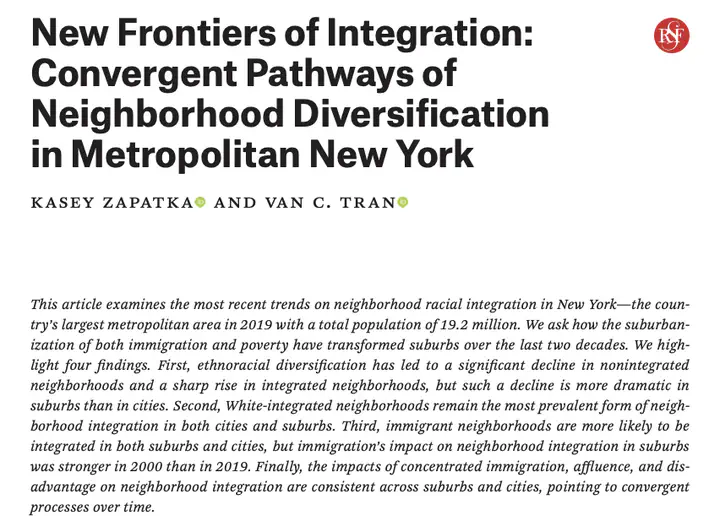New Frontiers of Integration: Convergent Pathways of Neighborhood Diversification in Metropolitan New York
 Image credit: Unsplash
Image credit: UnsplashAbstract
This article examines the most recent trends on neighborhood racial integration in New York—the country’s largest metropolitan area in 2019 with a total population of 19.2 million. We ask how the suburbanization of both immigration and poverty have transformed suburbs over the last two decades. We highlight four findings. First, ethnoracial diversification has led to a significant decline in nonintegrated neighborhoods and a sharp rise in integrated neighborhoods, but such a decline is more dramatic in suburbs than in cities. Second, White-integrated neighborhoods remain the most prevalent form of neighborhood integration in both cities and suburbs. Third, immigrant neighborhoods are more likely to be integrated in both suburbs and cities, but immigration’s impact on neighborhood integration in suburbs was stronger in 2000 than in 2019. Finally, the impacts of concentrated immigration, affluence, and disadvantage on neighborhood.
Supplementary notes can be added here, including code, math, and images.